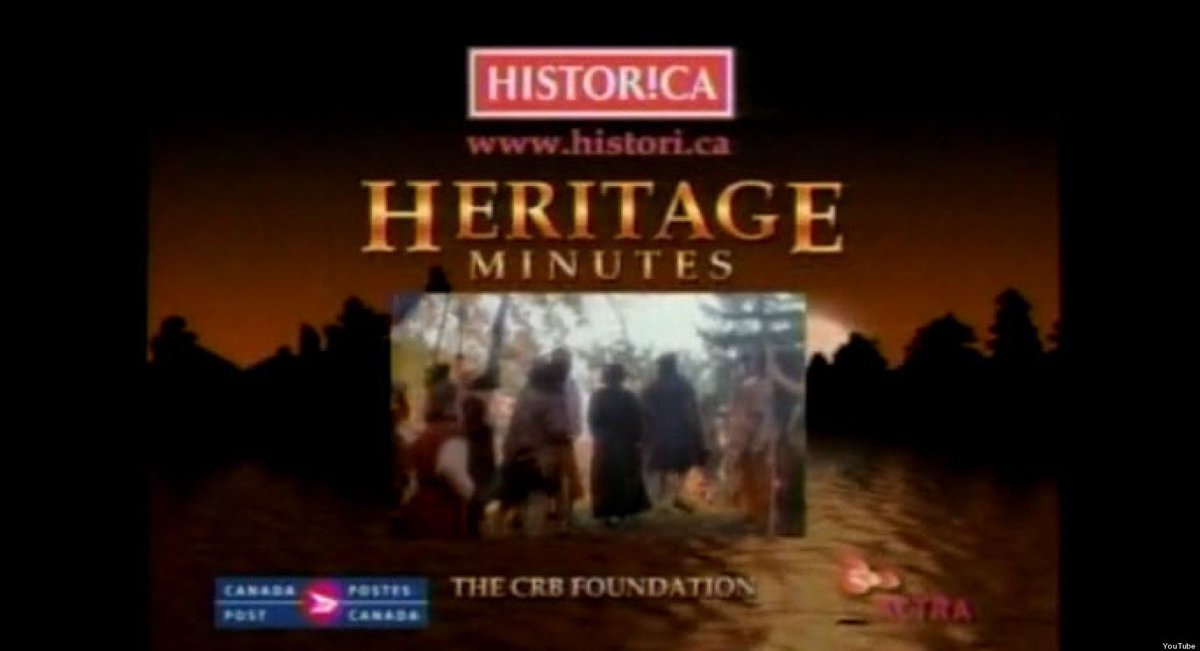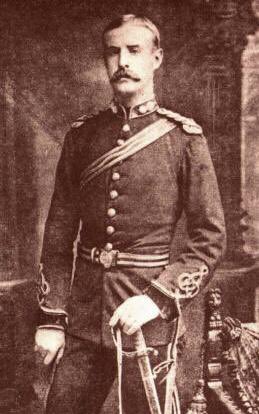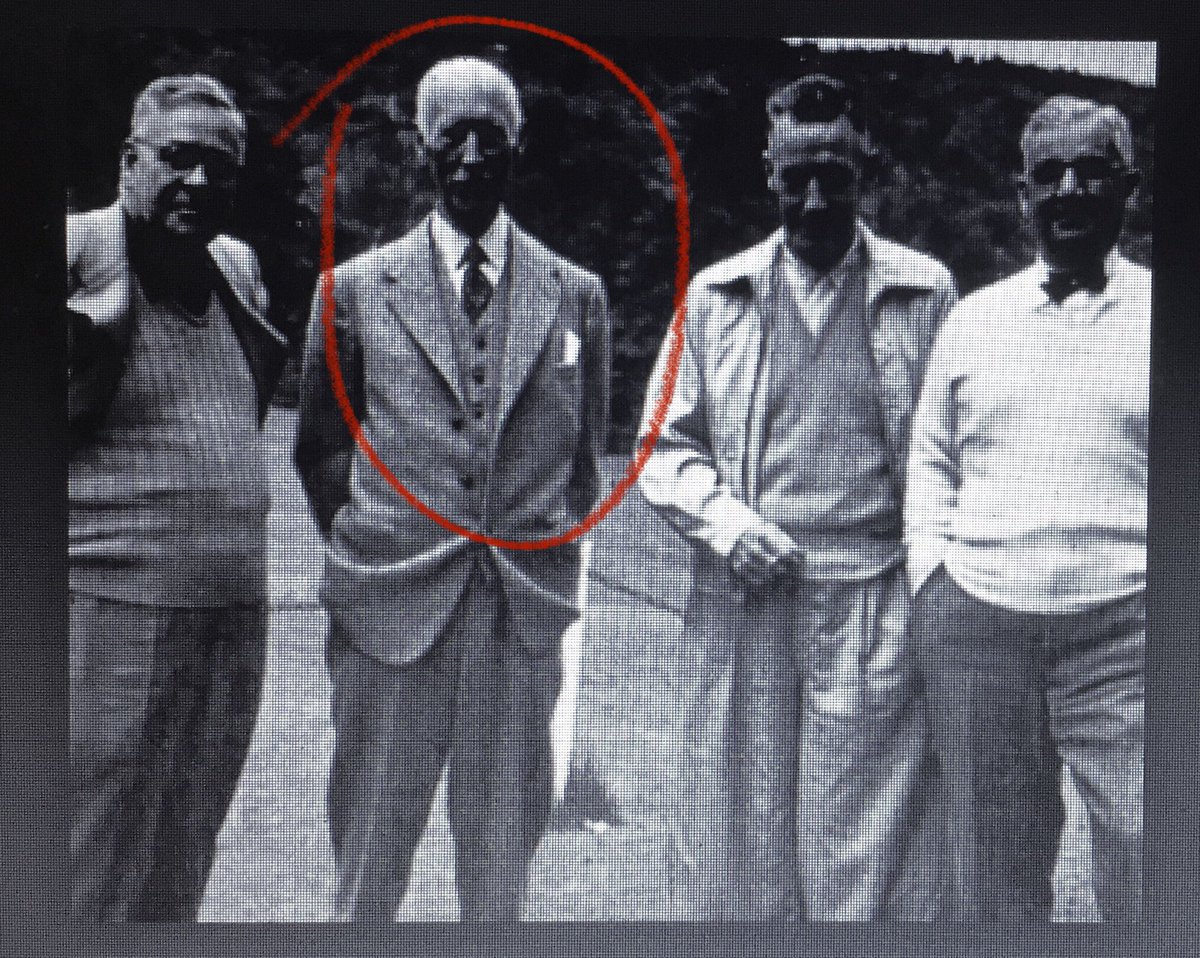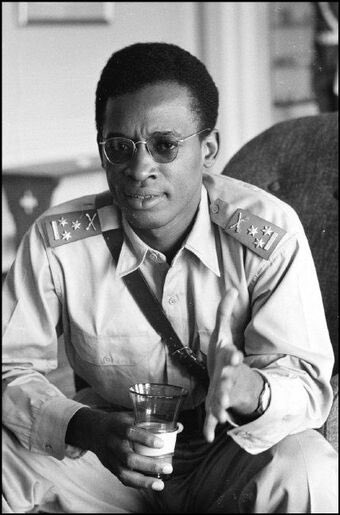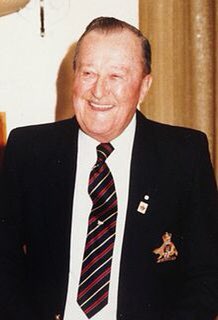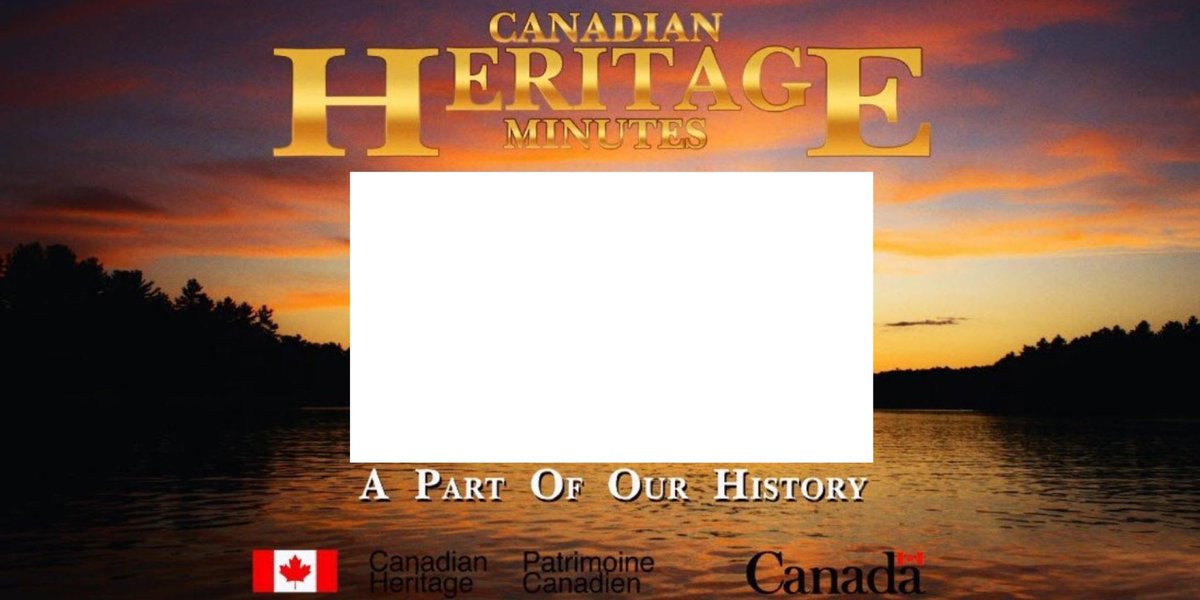A generation of Canadians was influenced by the Heritage Minutes, historical vignettes that began in 1995 and are still in circulation. While presented as neutral and apolitical, the Heritage Minutes reflected Canada’s true core: settler capitalism and white supremacy. (1/30)
As usual, all of this is given broader context and much more detail in Canada in the World: Settler Capitalism and the Colonial Imagination (available in physical and electronic formats, discounts available by directly messaging this account.) (2) https://fernwoodpublishing.ca/book/canada-in-the-world">https://fernwoodpublishing.ca/book/cana...
Part 1. Before looking at the Minutes themselves, let’s look at their founder: billionaire Charles Bronfman. Bronfman was born into a wealthy Montreal family and inherited a massive business empire including the alcohol brand Seagram and the oil company that became Sunoco. (3)
Bronfman is perhaps most known for his failures in running the Montreal Expos and earlier versions of the Alouettes, but some of his most significant impact has been in building networks of Canadian Jewish support for the Zionist project in Israel. (4)
Canada’s role in supporting the Zionist conquest and ethnic cleansing of Palestine is described in an earlier post. In addition to being invested in Israeli companies, Bronfman created the Birthright program which sends Jewish youth to Israel for a heavily propagandistic trip.(5) https://twitter.com/canadainthewrld/status/1275929570508705792">https://twitter.com/canadaint...
So, the 14th richest Canadian and committed Zionist decides in the 1990s that Canadians are not proud enough of their history and creates the Heritage Minutes. Enlisting the help of news broadcaster Patrick Watson, Bronfman sets out to instil Canadian pride among its citizens.(6)
The vignettes would “reflect and celebrate Canadian social and cultural values: tolerance, fairness, courage, tenacity, resourcefulness, inventiveness.” But this was a country built on genocide, slavery, and exploitation. How would the Minutes address that historical reality? (7)
Part 2. The Minutes were a masterclass in obfuscation and misdirection, often dealing with Canada’s questionable history by avoidance or co-optation. Eg. “Nitro” (1992) rightly highlighted the racist hyperexploitation of Chinese workers on the railroad.(8) https://m.youtube.com/watch?v=EE3ISzalVuo">https://m.youtube.com/watch...
Hundreds died on the railroad, Canada imposed a tax on Chinese immigration to prevent families from uniting, and supported fascist Japan’s murder and enslavement of millions of Chinese ppl. But the narrator? Once a railroad worker, now a comfortable middle-class grandfather. (9)
Thus even one of the most critical Minutes reassures the viewer that anything bad was in the past and modern Canada had made it right. We are left thinking “the railroad was bad, but this man is lucky he came to Canada in the end!” It’s not that simple.(10) https://vancouversun.com/news/anti-chinese-racism-is-canadas-shadow-pandemic-say-researchers">https://vancouversun.com/news/anti...
More than 80 Minutes were made, only a few addressing colonialism and the genocide. “Louis Riel” (1991) was sympathetic but made a gruesome spectacle of his hanging. “Syrup” (1997) dubiously emphasized cooperation btwn settlers and Indigenous people. (11) https://m.youtube.com/watch?v=tdikUhN4gSo">https://m.youtube.com/watch...
Meanwhile, a Minute was made to celebrate a NWMP officer, “Sam Steele” (1993), who played a key role in clearing Indigenous people off the plains, policing the exploitation of Chinese workers on the railroad, and concentration camps in South Africa. (12) https://m.youtube.com/watch?v=r00yaFwZ5bc">https://m.youtube.com/watch...
This was not simply a product of a less ‘woke’ era. “John A Macdonald” was made in 2014: the aggressive racist who explicitly sought “to kill the Indian in the child” is portrayed as a hero, receives a slow clap for Conferation and western conquest. (13) https://m.youtube.com/watch?v=vBGNEJpznNE">https://m.youtube.com/watch...
Genocide gets little air, but the World Wars are a prime topic. “Vimy Ridge” (2005) repeats a tired, debunked mythology around glorious Canadian victory. “John McCrae” (1992) celebrates the poet who despised French-Canadians and voted for conscription.(14) https://m.youtube.com/watch?v=1ZDme90k5gY">https://m.youtube.com/watch...
“Pauline Vanier” (1995) is on her tireless efforts to help refugees get settled after WWII. But Canada refused to accept Jewish refugees fleeing the Holocaust. “Underground Railroad” makes no mention of the legacy of Canadian slavery and segregation. (15) https://m.youtube.com/watch?v=KO0Kd_ANAVQ">https://m.youtube.com/watch...
So far, we see a lot of empty mythologizing of white Canadian history, attempts to downplay violence and genocide, and efforts to exaggerate the seemingly ‘good’ humanitarian moments in Canadian history while ignoring the fact that such moments were *exceptions* to the rule. (16)
“Lucille Teasdale” portrays the surgeon as a hero, devoted to the poor in Uganda. But Teasdale’s presence was a product of British conquest and the “civilizing” missionary legacy. She is framed as “modern” while Africans literally fight with spears. (17) https://m.youtube.com/watch?v=lye2OjIBqGA">https://m.youtube.com/watch...
Similar dynamic in “Water Pump” (1995) where grateful Africans thank Canadians for their modern ideas. This is an ongoing dynamic: Canadians are presented as modern, advanced, while ppl from the global south (esp Africa) are portrayed as backwards. (18) https://m.youtube.com/watch?v=LuQuSjDzjQo">https://m.youtube.com/watch...
Part 3. This peaks in “Dextraze in the Congo” which deserves more detailed account. In the video, plucky Canadian peacekeepers outwit a ‘crazed’ African militant who slaps nuns and threatens murder like a cartoon villain. This was produced in 2005. (19) https://m.youtube.com/watch?v=-xGV3s6suh4">https://m.youtube.com/watch...
Enter the Canadian. Clever, restrained, eminently ‘civilized,’ the frenzied African militant must submit to the authority of his ‘better.’ An innocent African asks “who are you” in amazement! The self-satisfied Canadian announces that he is part of a UN peacekeeping mission. (20)
The presentation is masterful in convincing viewers that Canada is a gift to the world and Africans need saving from themselves. But while the clip reveals much about Canada’s self-image and colonial imagination, it obscures the reality of the mission in the Congo. (21)
Congo had been horrifically conquered, colonized by Belgium in the late 1800s. Some 10 million ppl died under Leopold’s rule and Canadian ‘adventurer’ William Stairs actually laid the groundwork for the Belgian King with a violent invasion of the country in the 1890. (22)
Canada was a big fan of Belgian rule. In the 1950s, Ambassador Charles Hébert called Congolese people “backwards” and as having “no conception of government,” also accusing them of rampant cannibalism. A.B. Brodie (below) added that “savagery was still very near the surface.”(23)
The Globe printed letters from Canadians calling Congolese people “savages,” “apes who cannot read,” and “dirty, smelly n—-s.” The Toronto Star published a story about Congolese “primitives on the loose” with the headline “Cannibalism Making Comeback.”(24) https://www.ubcpress.ca/canada-the-congo-crisis-and-un-peacekeeping-1960-64">https://www.ubcpress.ca/canada-th...
This was after an incident wherein Canadian peacekeepers had been beaten up by local authorities. Why? It seems the peacekeepers were starting fights at local brothels and bars. The military had to insist that soldiers stop calling Congolese ppl “black bastards, “jigaboos.” (25)
Canadian behaviour in its mission was so disgraceful that Congo’s Prime Minister demanded they leave. Canada refused, citing “inverted racism,” while the Globe opined that Congolese “had never approached European standards of knowledge, competence or intellectual ability.” (26)
The mission was to assist Congo’s PM Patrice Lumumba (below) who had asked for UN support. Belgium had technically withdrawn, but fomented a civil war and supported a breakaway, right-wing, pro-Belgian faction. Canada joined the mission but sided with the pro-Belgian forces. (27)
In fact, a Canadian was responsible for the capture and murder of Lumumba himself. Jean Berthiaume had developed a friendship with the right-wing leader Joseph Mobutu, and provided him with Lumumba’s location and a suggestion that they use paratroopers to capture him. (28)
So the peacekeeping mission so dashingly portrayed in the Heritage Minute? It involved calling Congolese ppl cannibals and apes, starting fights at brothels, and helping to murder the elected PM. Mobutu would be dictator until 1997, just 8 years before the Minute was made. (29)

 Read on Twitter
Read on Twitter